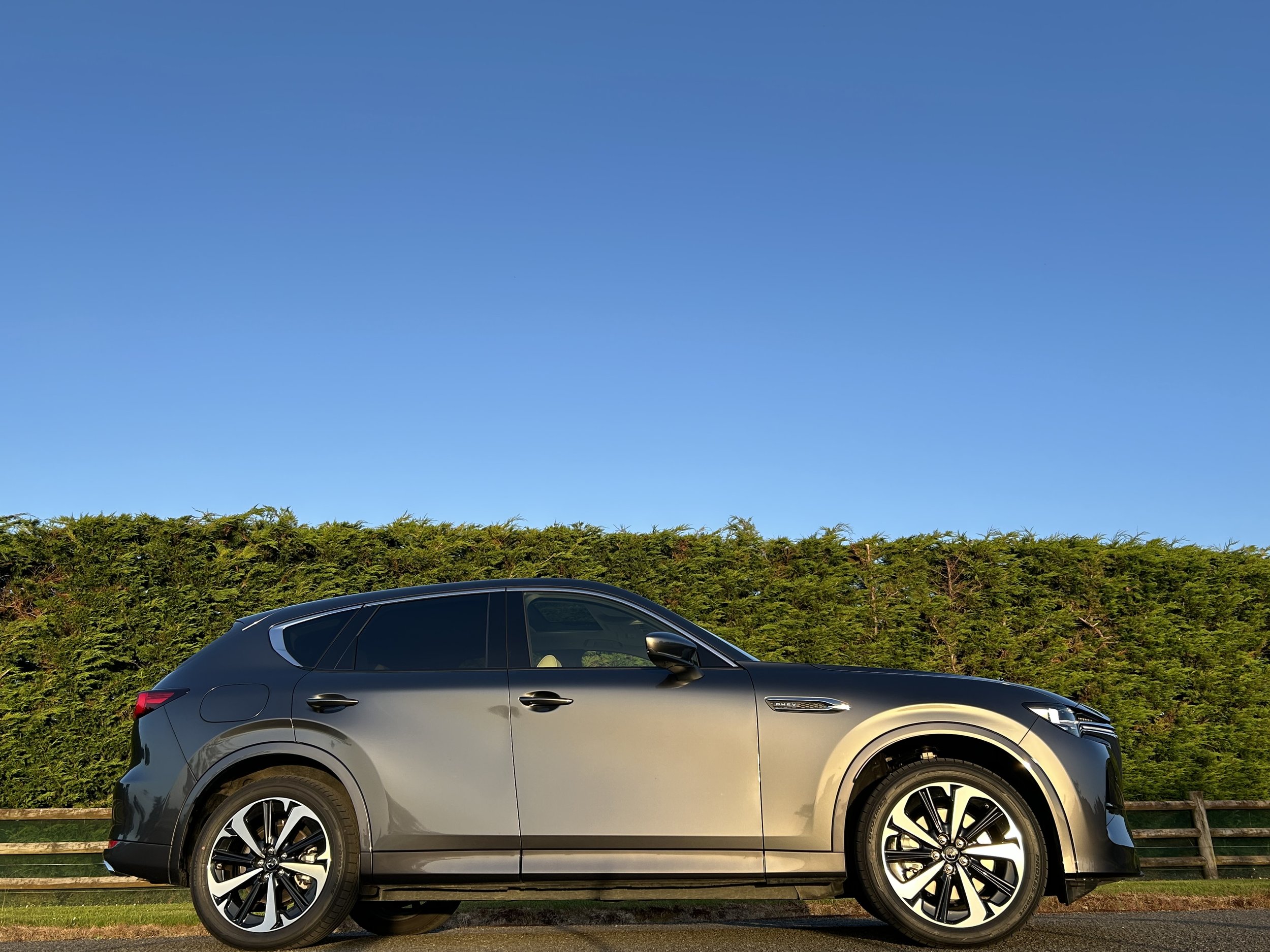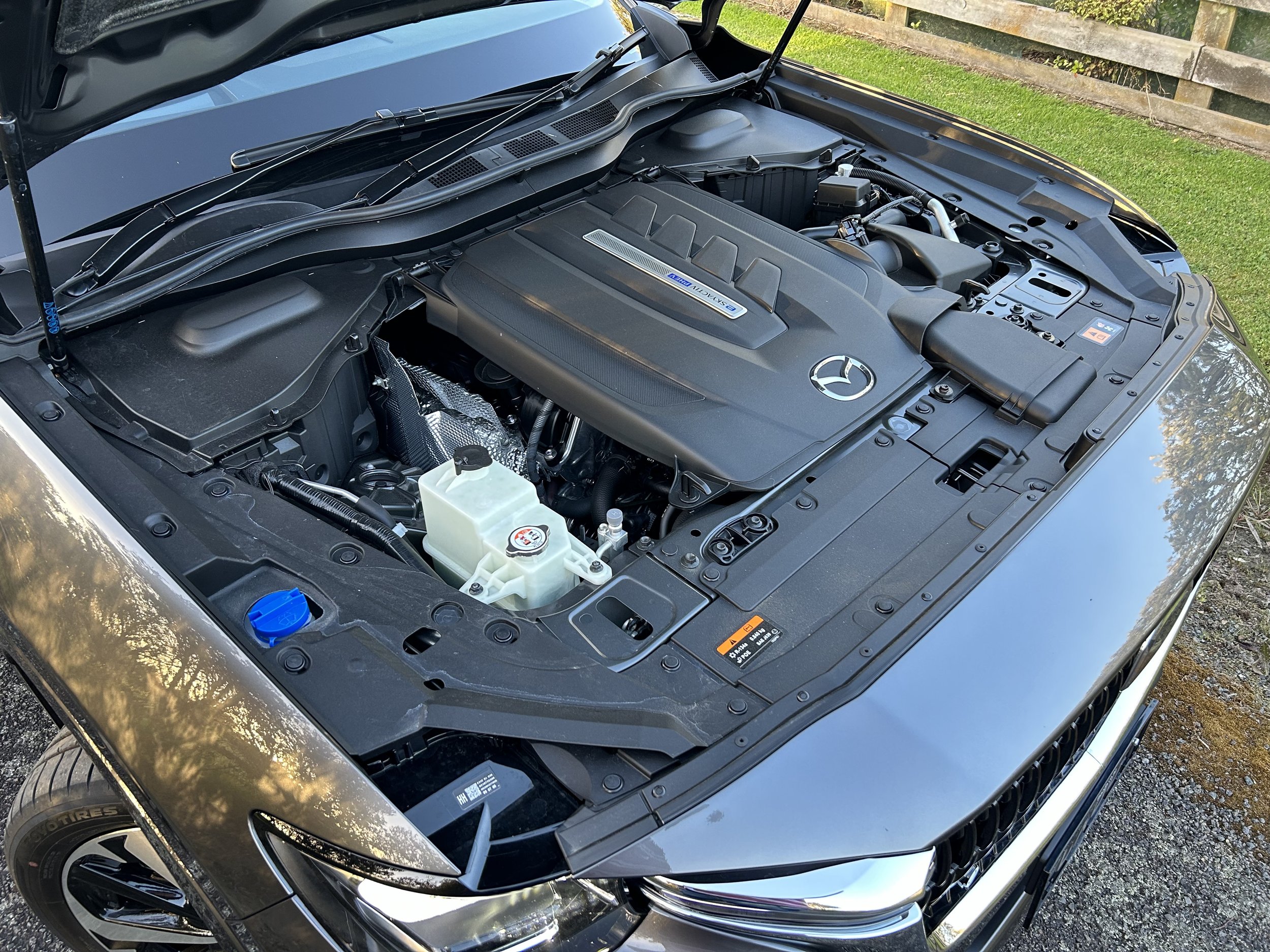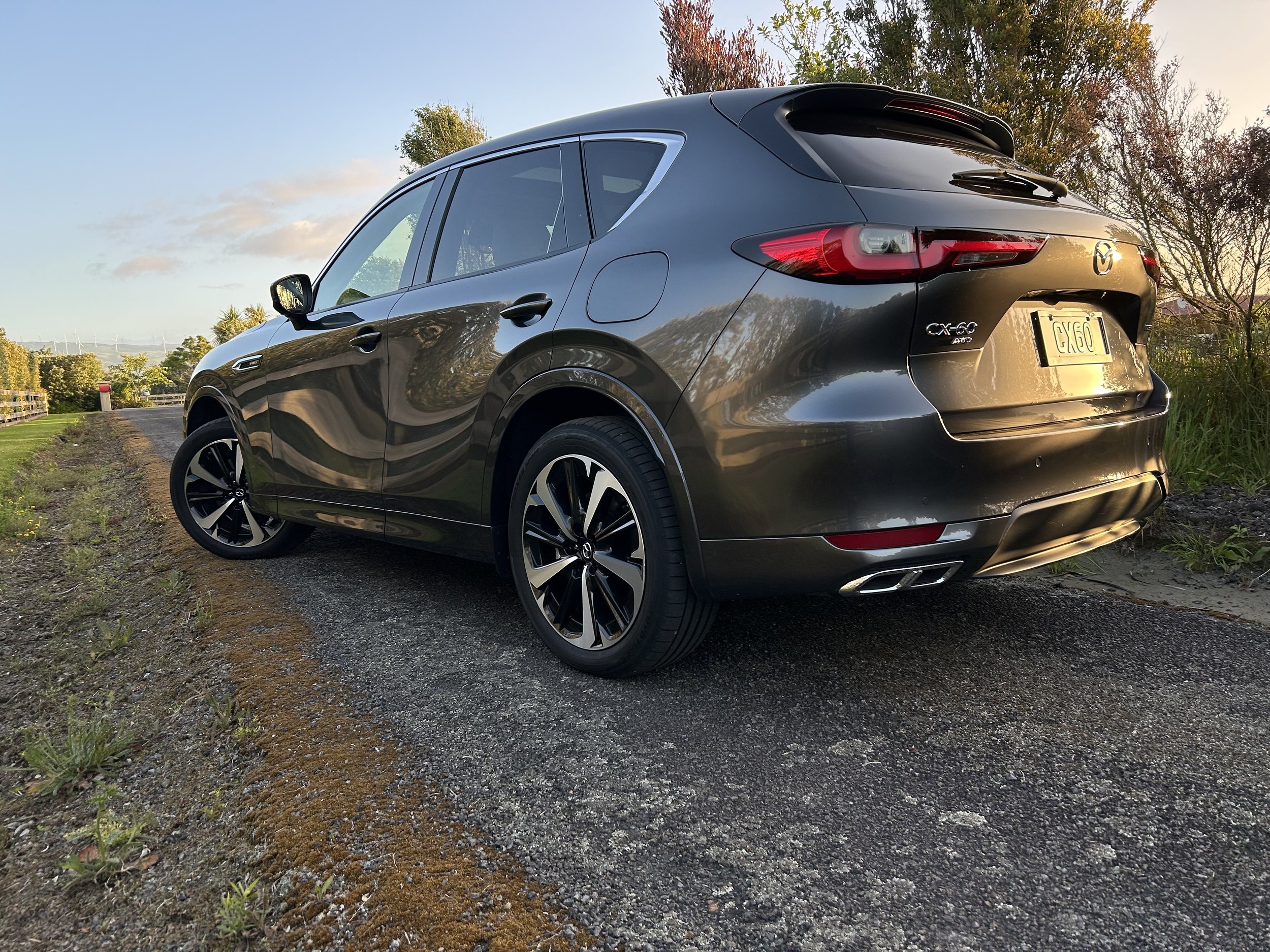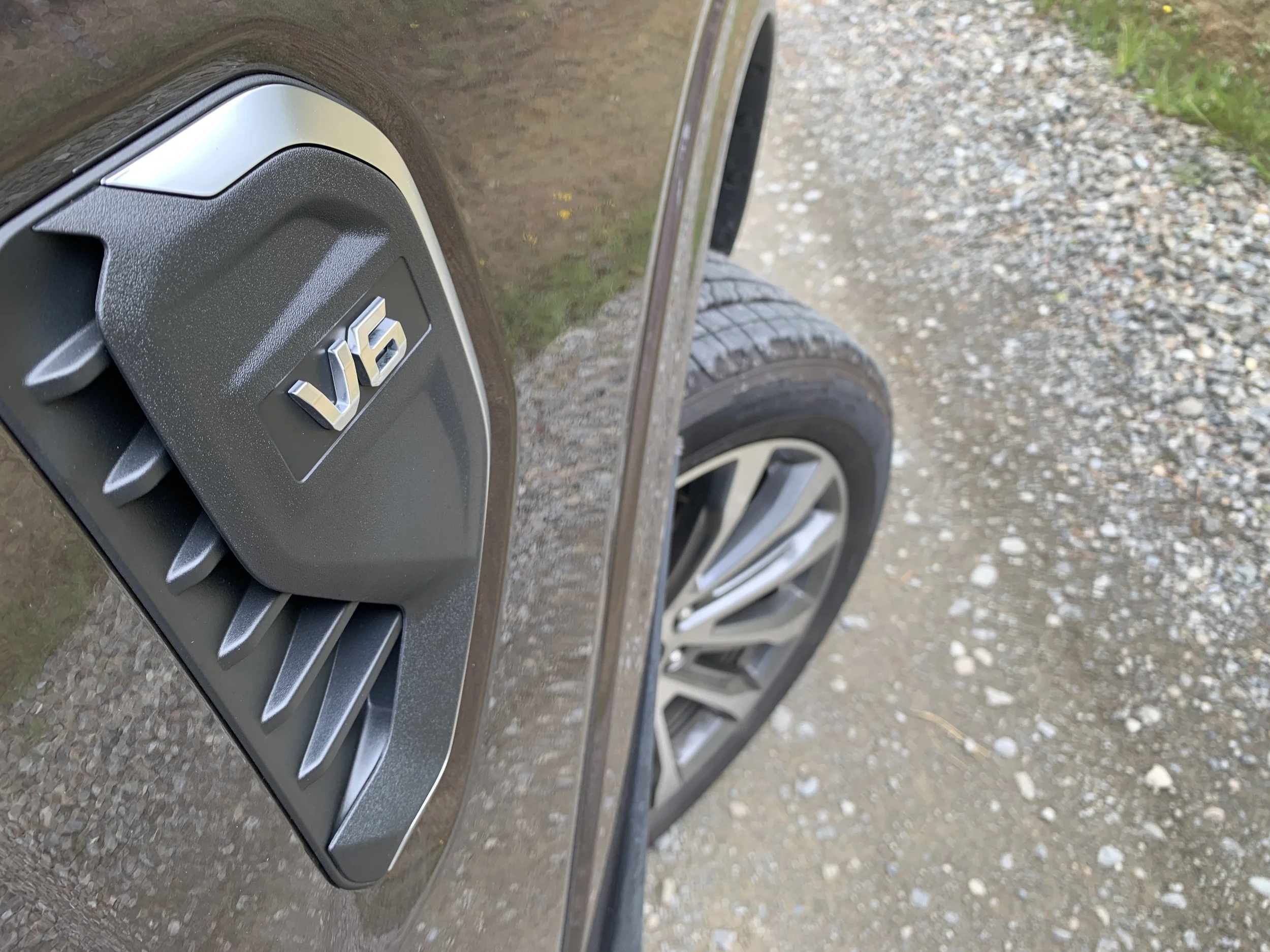Mazda CX-60 PHEV roadtest review: The strong silent type
/The electric-enabled variant provisions great opportunity for truly frugal, refined running.
At a glance
Price: $90,990.
Powertrain: 2.5-litre with plug-in hybrid, 241kW/500Nm, eight-speed automatic, all-wheel-drive.
How big: 4740mm long, 1890mm wide, 1686mm high, 2870mm wheelbase.
We like: Styling, interior finishing, PHEV drivetrain.
Not so much: Transmission clunk, restricted on-the-move touchscreen functionality, firm ride.
WITH incentivising low-emissions vehicles now over, will the trend for buying them tail off?
Plenty of conjecture has been aired. General consensus seems to be that some cooling will occur; just how how and over what time is the bit where there are multiple opinions.
Whatever happens, 2023 will be remembered as a strong year for anything with electric involvement.
Marked step up in purchase of hybrids through to fully battery-reliant cars suggests an increasing count of Kiwis understand importance of picking cleaner cars.
Sure, fully internal combustion engined choices occasioned 60 percent of sales. And, yes, Ford Ranger defied CO2 penalty pain under the now defunct Clean Car Discount to claim an eighth consecutive year as country’s favourite new light vehicle.
Yet national adoption in that period of 59,952 new battery-involved vehicles was surely also a big statement of change?
A 45 percent increase over 2022, the ‘best ever’ tally indicates Kiwi habits are increasingly changing for eco good; when the ‘right’ products are there to suit their lifestyles, they buy in.
Ostensibly, that’s a good portent for Mazda with this CX-60 plug-in hybrid. It ticks a lot of the right boxes and the release timing could not be better. Last year was not a brilliant one for Mazda; it’s market share was diminutive. You’d call it a quiet achiever. Maybe this car could change its fortunes.
Sports utility wagons are hot. This one lands with everything all-new and a premium edge and at time when consumer interest in hybrid technology remains resolutely strong.
Mazda’s first tilt at the plug-in sector plays handily with an engine that has served it well for some years now in marriage with a 17.8kWh battery-fed e-motor, you get the brand’s most powerful passenger model that, when operating optimally, also one of its most parsimonious fuel burners.
The test example easily hit its marks in 500 kilometres’ urban and open road driving, through dry and wet, easy and congested conditions.
Seeing 1.1 litres per 100 kilometres from the petrol and electric combining optimally was extremely satisfying. It’s a figure not normally associated with a car of this size and weight. While the period it held to highest thrift was relatively fleeting, an hour’s open road driving failed to move it above two litres per 100km.
The better news, all the same, was the overall weekly average. Worst scenario with PHEVs is what happens when they have operate for a long period beyond when the electric drive can render much help.
Lithium ion tech comes to the fore here; it never fully depletes. That was obvious with the CX-60, which even though the cited state of charge was so low that pure electric drive could not be rendered, the system was completely out of the fight.
There was clear evidence it was uploading off kinetic charge at every opportunity. The benefit? From a week’s worth of running, an average of 7.6 litres per kilometre.
Again, for a car of this size, and substance, that’s great news. Also, a markedly improved result that was achieved two months’ prior with this car’s alternate engine, the 3.3-litre inline six, from which my evaluation delivered a sobering 11.5L/100m overall and at most frugal registered 7.1.
Given the decision to design and build an all-new engine of any kind is a complicated and costly one for any carmaker, and even though theirs is smooth, near-silent and strong-willed, exactly why Hiroshima has delivered an inline six at this time is … well, hmmm … highly interesting.
The electric-assisted four having better power and torque and being less fuel hungry and more environmentally sound lends conclusion that, if future-proofing and residuals are in your mind, there’s a certain inevitability as to which powertrain will drive Mazda’s aspirations.
Nonetheless, regardless how well Mazda fares with the bigger engine, it’s a choice that has quite literally shaped the car. That long-nose, cab forward look is a byproduct of having to accomodate the six; a casual glance at the engine bay reinforces this. A space that only just takes the big powertrain very much swallows the 2.5 four.
Going large also expresses in CX-60’s overall size. Sense that it is an only slightly larger car than the CX-5 that resonates so strongly here is a trick of smart styling. At 170mm longer and 45mm wider, the CX-60 in reality makes for a more dominant presence and realisation of how much bigger nails when they are side-by-side.
Styling-wise, it’s clearly from the same family. Some say its height and lack of substantial ground clearance leave it looking a bit slab-sided; I’d suggest you’d want to pick your paint hues wisely; Takami treatment is a good finishing touch.
If the styling doesn’t quite shake those wed to other premium choices, the build quality cabin might. The Takami grade lays on materials, design elements and finishing of very high standard.
This car competes in a category in which a certain other talks about how its cars are tended to by ‘master craftsmen’. All I can say is that those folk must been moonlighting for Mazda. The look, feel and quality of its materials match what you would find from other elite brands.
Maybe it’s a shame that the control layout is somewhat conventional and sensible, and a bit too much like those in the other Mazda SUVs which are supposedly more mainstream.
I do like, nonetheless, that there are plenty of physical buttons for the things you'll want to adjust more frequently. The infotainment system, operated via the 12.3-inch centre screen that is Mazda’s biggest yet. has superb Android and Apple connectivity.
But you keep having to remind yourself that, while the centre screen is a touchscreen, Mazda has limited its functionality to certain apps and speeds so most of the time you have to use the central rotary controller. Which is a faff, frankly.
As a five-seater, it is almost under-utilised. All seating positions are good for space, rear seat occupants won’t quibble for lower legroom, though large shoe-wearers might find the front seat rails slightly impinge on foot space. The middle of the rear seat lacks the same comfort as the two outer seats, but an adult can still fit in.
Families that simply cannot find a way to pack light will love that it has a generously-sized boot that can hold up to 570 litres, rising to 1726 litres when the rear seats are folded down. The first capacity puts it on par with a Toyota RAV4 and Nissan X-Trail and well ahead of the CX-5.
The driving position is excellent and the seat design very good. Biometric technology that assists in setting the perfect driving position seems like a gimmick, but really isn’t. What does seems to be important, though, is knowing your exact height to input. It’s that precise.
Dual frontal, side chest-protecting and side head-protecting (curtain) airbags, as well as a driver knee airbag, are standard. A centre airbag which provides added protection to front seat occupants in side impact crashes is also standard. It also delivers a wide span of driver assists, the highlights including autonomous emergency braking (car-to-car, vulnerable road user and junction assist) as well as a lane support system with lane keep assist, lane departure warning (and emergency lane keeping and blind spot monitoring.
No argument, the premium push comes with a big sticker. We’re not used to spending this much on medium-sized Mazda SUVs; before this generation, even the largest (the CX-9) was cheaper.
There are some areas it could improve.
Given how the powertrain is so well-enabled, you could easily envisage this car working well in the full-occupancy, distance driving mode.
Yet though it has assuring driving feel, and is surprisingly engaging to drive, with lovely steering feel and decisive brakes, the suspension tuning will raise comment.
I wasn’t expecting the PHEV CX-60 to be particularly soft and pillowy because, while some SUVs do go that way, sportiness is in Mazda’s DNA and, with that, comes some degree of firmness.
Above that, I can understand why Hiroshima wanted to make this car feel alive because it has so much grunt: 241kW and 500Nm makes this one of the most powerful vehicles Mazda has ever made. And despite weighing over two tonnes, if you flatten the throttle you’ll rocket from 0-100kmh in 5.8 seconds. That’s hot hatch fast.
Yet as enticing as that might seem, and much as the suspension design and tune doubtless helps this car zip through bends with considerable elan, and ensures it is not easily upset by body roll, the tune could frankly stand being dialled back a bit.
Taut is all well and good, but you’re not buying this edition of the CX-60 be a large MX-5 substitute. Perhaps the six; but not this one. It’s the kind of car in which driver fun simply has to be secondary to family convenience and, on this side of things, you might hear complaints about how the ride verges on harshness on some surfaces.
That’s one of two issues. The other is in respect to the transmission. An eight-speed unit, developed in-house by Mazda, it has a tendency to clunk and jerk, mainly at low speed. I imagined it might be less pronounced in the PHEV, which was driven after the six, as conceivably with that format you can rely on instant, low-down electric assistance to soothe gear changes. But that didn’t seem to be the case.
There’s a slight concession with the electric element, too. That this car will conceivably - with light throttle application - provide as much as 76km of wholly battery-fed range will doubtless see it compared to the Mitsubishi Outlander PHEV, which when treated just as kindly still only has an eight kilometre range advantage.
Where they differ is in respect ability to furnish easy on the run recharging. The DC-enabled Outlander gets far better opportunity from the public network than CX-60’s AC-specific approach.
Whether that’s important depends on how you intend to use this car.
The line of argument that PHEVs are at their best for short stint, preferably urban use, is reasonable. For most of the time. Most people only drive 40kms’ a day, if even that much. The CX-60 in that scenario is easily capable of delivering very low to no fuel burn. In that scenario, you might consistently maintain the battery in a tate of health sweet spot, simply from trickle charging.
However, the CX-60’s clearly cut out for more than that. It’s car that would in so many other ways be a great choice for proper road tripping.
With the Mazda system, unlike that on - as an example - a Ford Escape PHEV, there’s no logical way to bank battery power for ‘as and when’ employment.
Rather, it’s always striving to involve to some degree. That’s not a positive and a negative. On a prolonged 100kmh run, it certainly started well - the first hour was remarkable, the second very good, but into the third, it had delivered its best. From point where the ‘fuel’ gauge showing battery health to be negligible, the burn started to rise. Not massively, but still. That’s where DC capability comes i handy; it would lend opportunity for quick replenishment and also be a reset.
But DC is expensive as it logically asks for a much larger battery. Really, you’d not get the value unless you were a frequent flier on the open road.
Mazda has a fully petrol CX-60 for slightly less spend; but it wil use considerably more fuel. Others can sell full electrics of similar size for around the same, or more; but they won’t have the range. There are choices, but none without compromise.
























